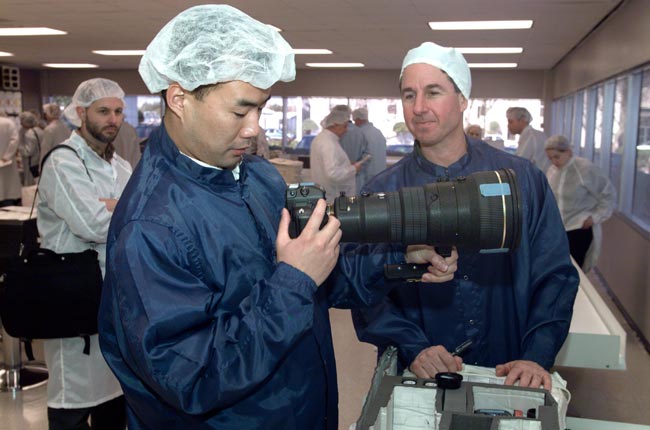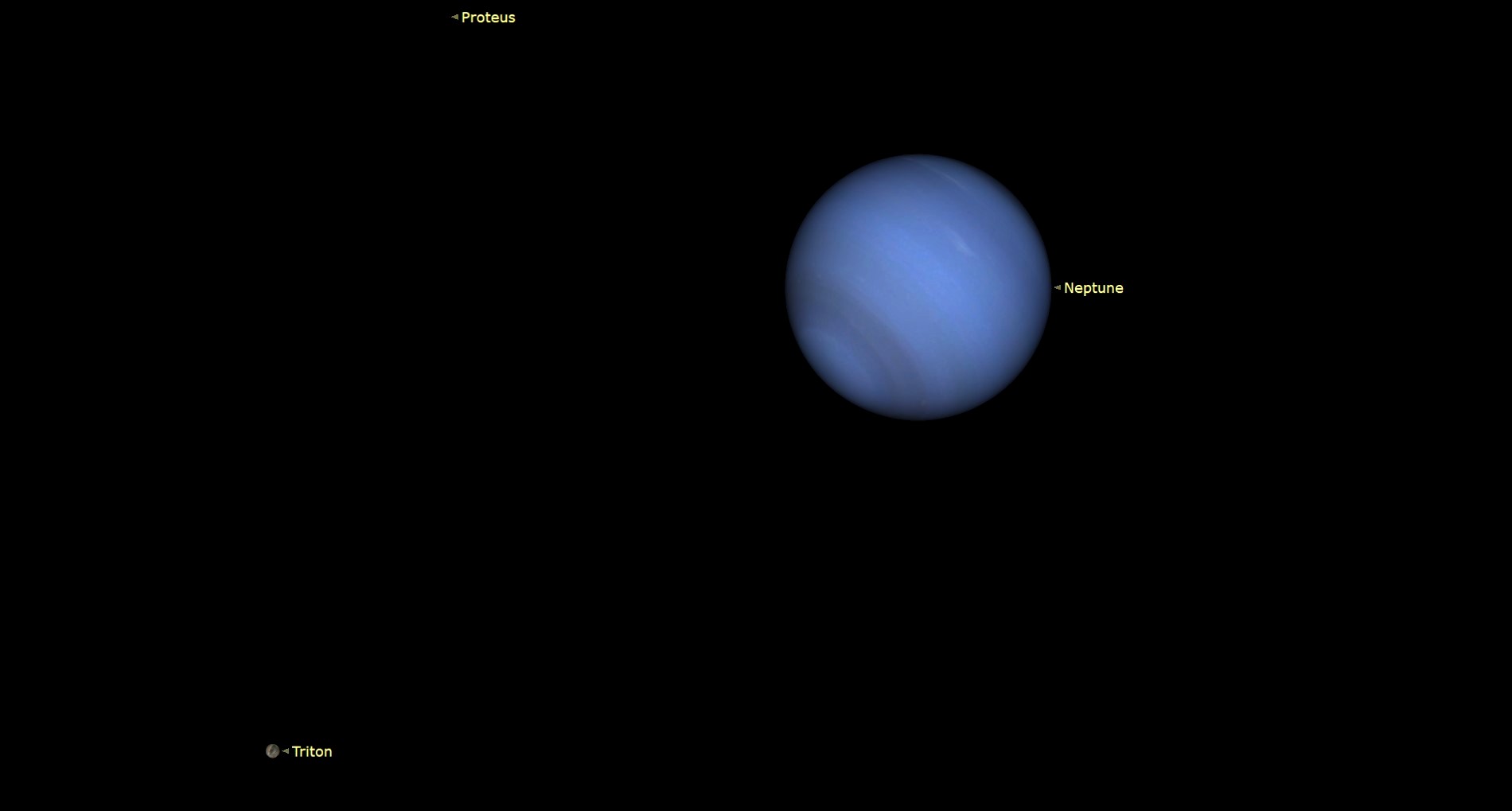Shuttle Snapshots: Orbital Photography Safeguards Astronauts

When thespace shuttle Discovery arrives at the International Space Station (ISS) thismonth, two astronauts will have the photo opportunity of a lifetime.
Armed withdigital high-resolution cameras, ISS Expedition commander Sergei Krikalev andflight engineer John Phillips will take what flight controllers and trainers hopewill be a comprehensive survey of the protective thermal tiles that lineDiscovery's belly.
"They willbe doing some test imagery in the next week and charging camera batteries,"said astronaut trainer Steven Berenzweig, a shuttle and ISS photography trainedat NASA's Johnson Space Center, in a telephone interview. "We want them to getsome practice with their focus and mapping techniques."
The spaceshuttle Discovery - NASA's first space shuttle to fly since the Columbiadisaster - is poised to launch as early as July 13 and could reach the spacestation on July 15, according to its mission timeline.
The tilesurvey images taken by the ISS crew will be relayed back to engineers on Earth,where they will be studied for signs of any damage. They represent only one oftwo critical photography session during Discovery's STS-114 flight. The other,to be conducted just after launch by the STS-114 crew, will document how Discovery'smodified external tank weathered the spaceflight.
"This isgoing to be the most photographed shuttle mission that's ever launched," veteranastronaut Eileen Collins, commander of Discovery's STS-114 flight, said in apreflight mission briefing.
Columbia'sthermal protective skin was damaged by foam debris from its external tankduring launch, which punctured a wing panel and allowed hot gases to breach theshuttle's skin during reentry. The orbiter broke apart over Texas on Feb. 1,2003, killing its seven-astronaut crew.
Breaking space news, the latest updates on rocket launches, skywatching events and more!
Serious snapshots
The dockingof any space vehicle - manned or otherwise - at the ISS is just cause forcrewmembers to grab their cameras. But for STS-114, it is more than a matter ofpretty pictures.
"Otherimages of the orbiter [docking] in the past have been almost more of a publicaffairs type of thing," Berenzweig said.
Butshuttle engineers will scrutinize the Expedition 11 crew's images to determine whetherDiscovery's thermal protection system is sound enough for the return tripthrough the Earth's atmosphere, which is currently scheduled for July 25. Ifeverything checks out, the crew can return safely. If extensive damage isfound, though flight controllers believe it's unlikely, the shuttle crew couldseek refuge aboard the space station and await a rescue orbiter.
Krikalevand Phillips are outfitted with Kodak CDCS 660 digital cameras, one with a 400mm lens to resolve tile features down to 2.5 inches (6.3 centimeters), and theother with an 800 mm equivalent for photographs down to one inch (2.5centimeter) in resolution.
"Thespace shuttle will stop directly below the space station and Sergei and I willbe looking out two different windows looking straight down at the space shuttle,"Phillips said in a pre-flight NASA interview, adding that he expects Discovery'sdocking to be a mission highlight. "Unfortunately, it's not just a sight-seeingkind of thing. We can't say, 'Well there's the Shuttle silhouetted against theGreat Barrier Reef.' We're going to be busy taking exactly the pictures thatwe're programmed to take."
Theastronauts will use the 800 mm lens to image Discovery's sensitive tileregions, such as its wheel well doors, while the 400 mm camera will documentthe overall condition of orbiter tiles, NASA officials said.
Timecrunch
Krikalevand Phillips have about 93 seconds to sweep their camera lenses acrossoverlapping swatches of Discovery's tile-covered belly.
"Eachone of their shots has about 40 to 50 percent overlap from the one before it," Berenzweig said. "We're hoping they willget two to three complete mapping passes during the time."
DuringDiscovery's docking approach, Collins will park Discovery about 600 feet (182meters)from the ISS and perform a "rendezvous pitch maneuver," which flips the orbiterto present its underside toward the space station, then complete the circle.The entire maneuver takes about nine minutes.
"It'snot an easy task," Krikalev said of the tile survey during a NASA interview. "It'svery time-critical because the shuttle cannot stay for a long time near, near station."
Tankwatch
Discovery'sISS docking time has been scheduled to provide optimum lighting conditions forthe Expedition 11 crew's photographs, and the same goes for the shuttle'sexternal tank separation.
"The launchwill be scheduled in a way that we still have sunlight when we separate fromthe external tank," Collins said.
STS-114astronauts will photograph Discovery's external tank departure earlier than inpast shuttle missions to ensure a good look at the tank's condition. A newdigital camera has replaced the 35 mm film camera inside Discovery's rightumbilical well for additional external tank imagery. Standard film cameras inthe orbiter's left umbilical well will also record the external tankseparation.
Meanwhile,the tank too bears a television camera to broadcast images of itself andDiscovery's underside to flight controllers.
"It's ahuge wealth of data coming down, and we have a lot of people who are set toreceive that data," said STS-114 mission specialist Andrew Thomas.
Fixing NASA: Complete Coverage ofSpace Shuttle Return to Flight
Join our Space Forums to keep talking space on the latest missions, night sky and more! And if you have a news tip, correction or comment, let us know at: community@space.com.

Tariq is the award-winning Editor-in-Chief of Space.com and joined the team in 2001. He covers human spaceflight, as well as skywatching and entertainment. He became Space.com's Editor-in-Chief in 2019. Before joining Space.com, Tariq was a staff reporter for The Los Angeles Times covering education and city beats in La Habra, Fullerton and Huntington Beach. He's a recipient of the 2022 Harry Kolcum Award for excellence in space reporting and the 2025 Space Pioneer Award from the National Space Society. He is an Eagle Scout and Space Camp alum with journalism degrees from the USC and NYU. You can find Tariq at Space.com and as the co-host to the This Week In Space podcast on the TWiT network. To see his latest project, you can follow Tariq on Twitter @tariqjmalik.
